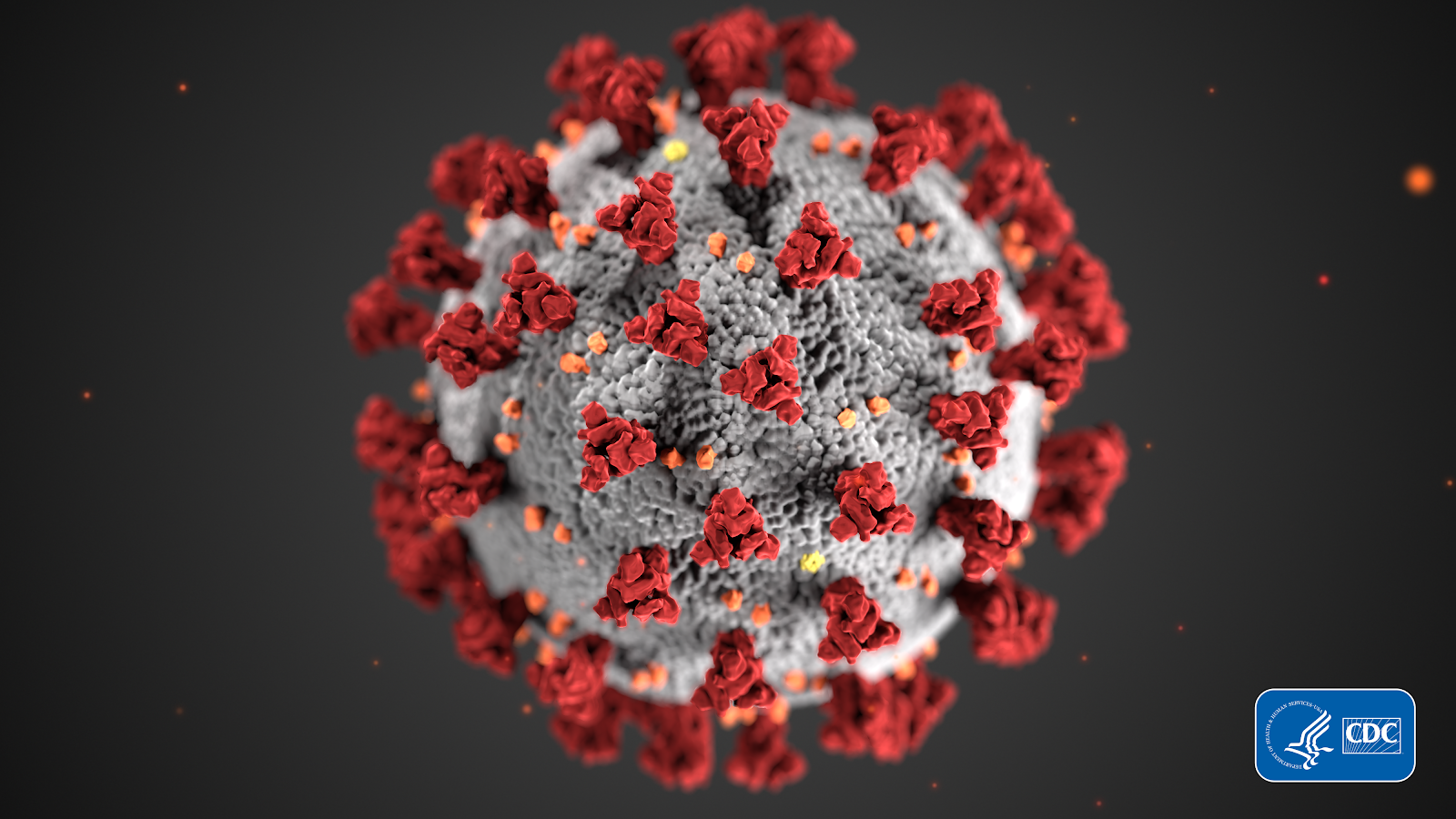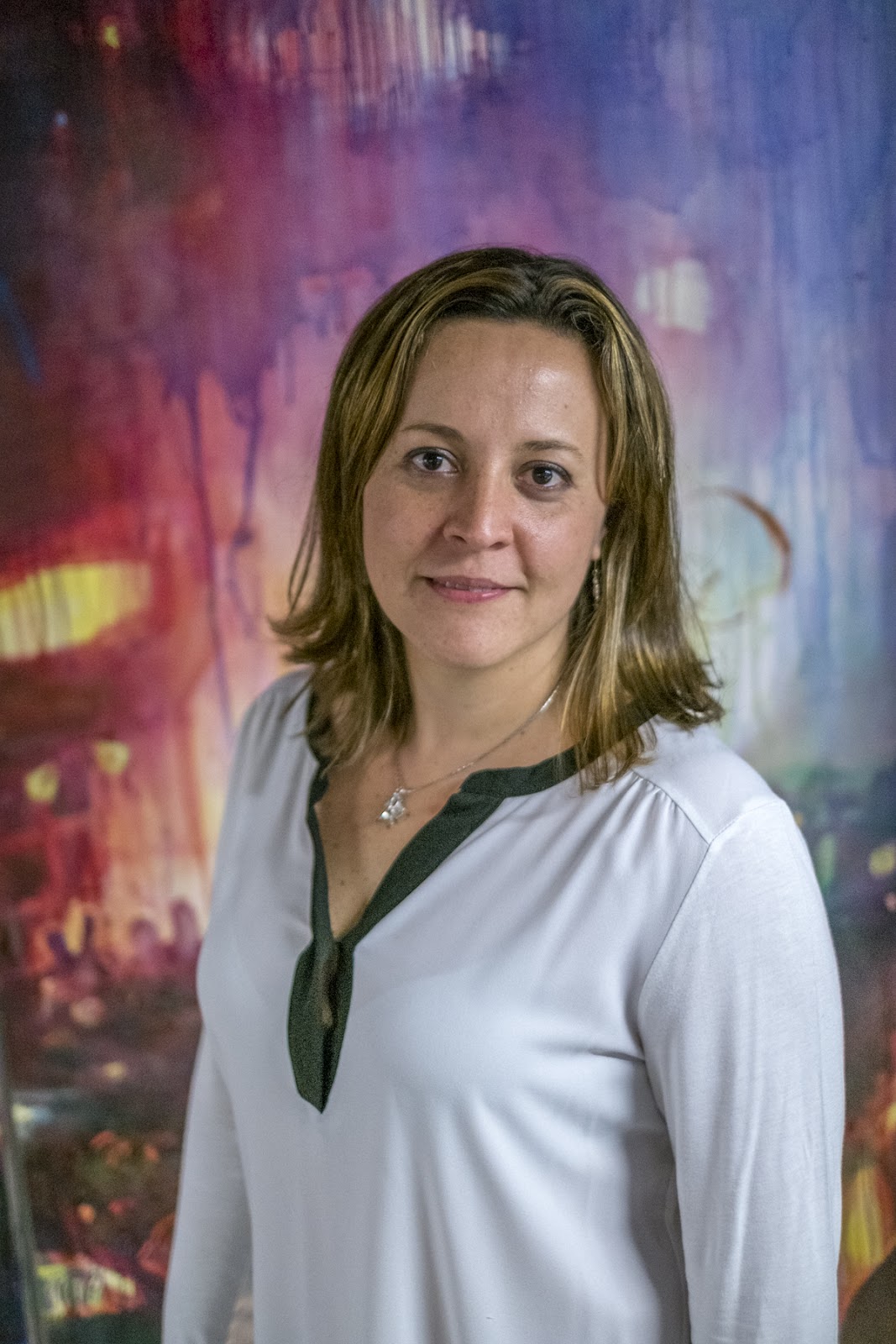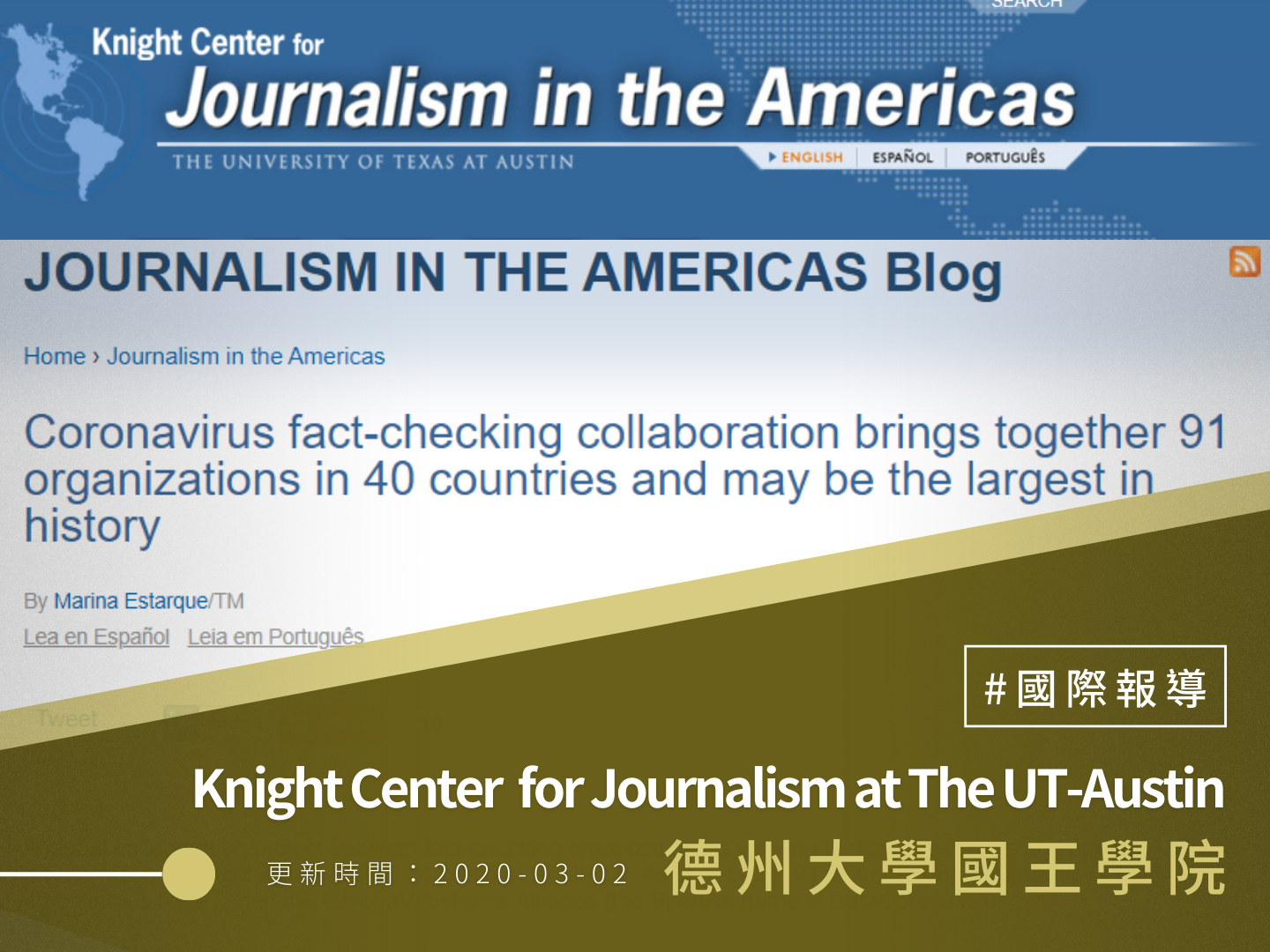【德州大學國王學院】Coronavirus fact-checking collaboration brings together 91 organizations in 40 countries and may be the largest in history
【2020年3月2日 德州大學國王學院/JOURNALISM IN THE AMERICAS Blog】
By Marina Estarque/TM
A global collaboration project between fact-checking organizations is working to disprove rumors and combat disinformation about the Sars-CoV-2 coronavirus epidemic. As of Feb. 27, 91 fact-checking organizations from 40 countries have joined the CoronaVirusFacts Alliance (the Spanish name is DataCoronaVirus).
In Latin America, ten organizations from Argentina, Brazil, Colombia, Ecuador, Mexico and Venezuela are already part of the collaboration, which was launched on Jan. 24. They are: Aos Fatos, Agência Lupa, Agence France-Presse (AFP), Animal Político, Chequeado, ColombiaCheck, Ecuador Chequea, Efecto Cocuyo, Estadão Verifica and La Silla Vacía.
According to the associate director of the International Fact-Checking Network (IFCN) and founder of Brazil’s Agência Lupa, Cristina Tardáguila, who is responsible for coordinating the project, the collaboration may become the largest alliance of checkers in history. In just 33 days, the reporting effort has already produced 576 checks in 15 different languages.
 Coronavirus. Image: CDC
Coronavirus. Image: CDC
“The greatest collaboration I have ever seen was in the Argentine elections, Reverso,” Tardáguila told the Knight Center. Reverso had 127 allied outlets (40 of them as producers), lasted six months and produced 180 checks, 40 audio recordings and 32 videos. It also trained 451 journalists and had one million monthly visits during the period it was live.
“We, with 90 media outlets, in one month, have already done 570 checks. If we spend a year covering coronavirus, it will explode. It has a lot of potential, in terms of production intensity, and we have no point on the horizon for finishing,” Tardáguila said. IFCN does not yet have data on how much of the public has been impacted, but Tardáguila says that the publications have had a large audience. To follow the work, see the project’s list of checks on Twitter.
IFCN, which is part of the Poynter Institute, usually organizes joint coverage between fact-checking organizations at major political, economic or environmental events, such as the G20, Davos Forum, UN General Assembly or the COP. But the coronavirus alliance is special, Tardáguila said.
“There is a big difference. Usually our collaborations have a deadline to end, now we have no idea how long we will have disinformation about the coronavirus in circulation,” she said.
The initiative came after a story that Tardáguila did with the editor-in-chief of Taiwan FactCheck Center, Summer Chen, in January. The report was about stories of eight people being arrested in China, after the government considered that they published false news about a disease –it is now known that it was the new coronavirus. Throughout the investigation, the city of Wuhan was isolated and the government needed to recognize the epidemic.
“Summer warned me that this issue was going to get big. So I asked a question in our Slack group, which has about 350 checkers, if they were interested in collaborating on this. It was a Friday morning and later, there were 60 checkers joining, all very concerned and warning about false news in their countries,” Tardáguila said.
The group follows the same methodology as other IFCN joint coverage. In addition to the Slack group for communication, they created three documents in Google Drive.
One of them is a shared table, in English, “with an infinite number of columns,” Tardáguila explained. There is a series of information there: the lie that was checked, with link and date, as well as a small summary of the check, with link, date of publication, name and contact of the checker, as well as a field to indicate if the verification went through some correction. “We still have two more documents. One with everything we know is false, and the other with everything we know is true,” the journalist said.
To participate, you need to follow some simple rules, such as contributing with at least one check, republishing content always with the author’s credit, and allowing your verifications to be translated and published by other outlets.
In the beginning, the coordination work was more intense, because it was necessary to clarify doubts, determine processes and improve the method, but now the project is already on its own feet. In addition, Tardáguila is assisted by some of the alliance’s journalists.
“For example, Summer is helping the entire network, because there is a lot of information in Mandarin or Cantonese. And one of the challenges is that we, in the West, don’t have an account on social networks there, like Line, or Weibo. For this, help from checkers in Taiwan and Hong Kong has been vital,” she explained.
One of the legacies of the collaboration, according to Tardáguila, is to bring journalists together for a common cause. “Checkers are demonstrating that there is no competition in the fight against disinformation, journalists need to act in a friendly and collaborative way. The scoop is against the producer of false news, not against the colleague or the competing site,” she said.
Tardáguila explained that collaboration allows them to shorten the time when a lie circulates on the Internet without being disproved. As every check from the alliance shows the sources and data used to reach that conclusion, journalists from the project can check and share this content with their audiences. This makes the response faster and enhances the dissemination of real information, because it is published by different organizations around the world.
“We realized that the lies are identical. They pop up in Asia, in Europe, in Latin America. It’s the same video, the same photo, the same text. So everyone doesn’t need to do the same check. The shorter the time between publication of the lie and of the correct data, less people are impacted by this false content, which is fundamental, mainly in health,” she said.
In addition to coordinating the checks, IFCN has produced analyses on the flow of false content about the coronavirus. At first, they identified three waves of disinformation. One said that the virus was old and would have been created to sell a vaccine later on. The other was about the false origins of the disease, like from bananas or bat soup. “And there were, of course, conspiracy theories: Bill Gates was responsible, or China’s biological weapons, etc.,” Tardáguila said.

Cristina Tardáguila. Photo: Petrobras/Alexandre Grand
Then it was time for fake photos and videos. “Several videos of people falling were actually victims of a heart attack or were drunk. And edited together it seemed like the whole world was dying. Around the beginning of February, the predictions started, the Simpsons episode, the book or movie that predicted the arrival of the virus,” Tardáguila said.
In the middle of February, the wave of miracle cures came: garlic soup, salt water, vitamin C. “Drinking bleach prevents coronavirus, this was huge in the US. Cow urine, big in India. Then they start to find vaccines that don’t exist: ‘ah, there was a vaccine in such a place,’” she recalled.
At that time, says Tardáguila, Google, Facebook and Twitter “began to worry” and took steps to combat false information about the coronavirus. “They could do a lot more. Technically the checks are ready to be exposed by the platforms, but we did a test: we Googled coronavirus in ten countries on a given day and there was no check in any language.”
Currently, the journalist has identified a new wave of disinformation, which talks about races and religions that are supposedly more vulnerable or more protected from the disease. “For example: ‘Muslims do not get coronavirus, you should convert.’ Or ‘if you are such a race, you carry the disease.’ That is why they expel people from the subway and shops, just because they look Asian, there have already been several cases of this around the world,” she emphasized.
Tardáguila believes that there is a coordinated movement of disinformation about the coronavirus. According to her, some false news seems to be just the result of fear in the face of a new disease, others are intentional.
“Obviously there is something that is more linked to panic, it is grandma broadcasting on Whatsapp that garlic soup and vitamin C help. But you can see that there are several movements taking advantage of the disinformation with the coronavirus to push their ideologies, their flags. It is the case of the anti-vaccine movement, racist movements or some religions.”
For the journalist, the successive waves of false news show that the checking effort has had an effect. “The moment all the checkers attack a piece of disinformation, the producers of fake news migrate to something else.”
Tardáguila also started to coordinate a team of academics, who will do research with the alliance’s database. “We want to know what the path of the lie was, where it started, in what language, and where it ended up. And how many people were impacted by the checks and how many saw the rumors.”






